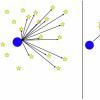This protocol based on the one in post 179 works very well, in my opinion. Ingredient doses and and measures have been tweaked. If anyone wants to vary it or make substitutions and report back on the results, please do.
Updated Alzheimer's protocol — experimental
(a link to the latest update can always be found on my profile page by clicking on my avatar)
The following in powder form can be used in fruit juice (measured doses are approximate as powders vary)--
HEPPS -- 1 g (1/4 teaspoon)
Taurine -- 10-15 g (2-3 teaspoons)
Carnosine -- 3 g (1.5 teaspoon)
Vitamin C -- 1.5 g (1/4 teaspoon)
The following are best in capsules (based on commonly available doses)--
Olive Leaf extract 20% oleuropein (one 500 mg cap)
Olive Leaf extract 25% hydroxtyrosol (one 100 mg cap)
Dihydromyricetin (one 350 mg cap)
Nicotinamide (one 250 mg cap or up to 2 grams. Lower amounts can also be used in fruit juice)
Magnesium theonate (one 667 mg cap, also available in flavored and unflavored powder; can be used in fruit juice)
Optional, for chelation of metals--Meriva curcumin (one 500 mg cap)
Optional, for those with herpes--Lysine, 1-2 grams
Dosing--
Take together every day or every other day for three months or as needed. Then once a week.
One might start with a lower level of HEPPS and ramp it up to 1g to avoid the initial rapid clearance of Aβ.
Edited by Turnbuckle, 14 September 2018 - 01:24 PM.




























































